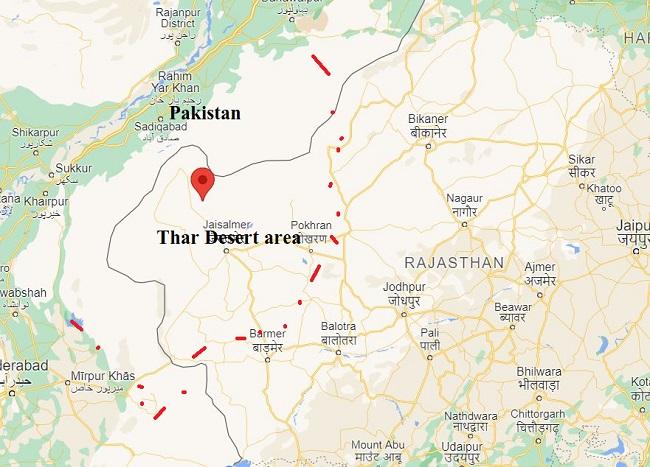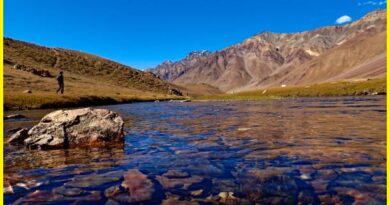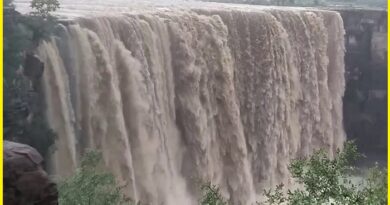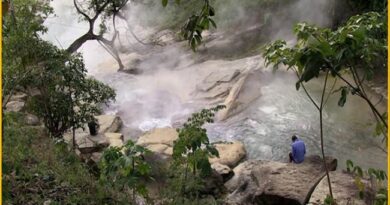Make Your The Thar Desert In Rajasthan A Reality!
The Thar Desert in India
The Thar Desert in Rajasthan, also known as the Great Indian Desert, is a large arid region located in northwestern India and southeastern Pakistan. It covers an area of approximately 200,000 sq, km. and is bounded by the Aravalli Range to the east and the Indus River to the west. The Thar Desert is characterized by its harsh climate, with hot temperatures during the day and cool temperatures at night. It is also known for its sand dunes, which can reach heights of up to 150 meters. Despite its arid conditions, the Thar Desert is home to a diverse range of flora and fauna, including a number of endemic species. The people of the Thar Desert have developed a unique culture adapted to the harsh conditions of the region. The majority of the population is engaged in traditional occupations such as farming, animal husbandry, and crafts such as weaving and pottery. The desert in India is also home to a number of important historical and cultural sites, including the famous cities of Jaisalmer and Jodhpur in India.
Where is Thar desert-The Thar Desert, also known as the Great Indian Desert, is located in northwestern India and southeastern Pakistan. It covers parts of the Indian states of Rajasthan, Gujarat, and Haryana, as well as the Pakistani province of Punjab and the southeastern portion of the Pakistani province of Sindh. Thar desert in India map-The Thar Desert map is showing the location of the Thar desert.

Thar desert weather
Thar desert in India has a harsh and arid climate, with extreme temperatures and very little rainfall. Summers are very hot, with temperatures often reaching over 45°C during the day, while winters are cool and dry, with temperatures dropping to near freezing at night. Rainfall in the Thar Desert is very low, with an average annual rainfall of only around 100-500 millimeters. Most of the rain falls during the monsoon season, which lasts from July to September. During this time, the desert can experience heavy rainfall and flash floods. The Thar Desert also experiences strong winds, especially during the summer months. These winds can cause sandstorms, which can be very intense and cause damage to buildings and crops. The desert in Rajasthan is also prone to droughts, which can have a significant impact on the people and wildlife living in the region.
Also read- India’s Biggest secret- ‘Sam Sand Dunes’, Take a Geotourism around the place
Thar Desert Geology
The Thar Desert is a result of geological processes that occurred millions of years ago. The region was once covered by the Tethys Sea, which gradually receded as the Indian subcontinent collided with the Eurasian plate. The Thar Desert itself is primarily composed of sandstone and shale, which were deposited during the Jurassic and Cretaceous periods. These sedimentary rocks were then exposed to weathering and erosion over millions of years, resulting in the formation of the desert landscape that we see today.

The desert also contains a number of geological features, such as sand dunes, rocky outcrops, and salt flats. The sand dunes are formed by wind erosion and are constantly shifting and changing shape. The rocky outcrops are made up of granite and other hard rocks that have resisted erosion, and they provide shelter for wildlife in the desert. The salt flats, known as the Rann of Kutch, are a result of ancient marine deposits that were left behind as the Tethys Sea receded.
Animals in Thar desert
The Thar Desert in Rajasthan is home to a variety of animal species that have adapted to the harsh desert environment. Some of the common animals found in the Thar Desert include-Indian Gazelle (Chinkara), Desert Fox, Indian Wild Ass (Ghudi), Desert Cat, Indian Pangolin, Monitor Lizard, Desert Gerbil, Desert Tortoise, and Indian Cobra.
Mirage
Mirages are a common optical phenomenon that occurs in hot and dry areas like the Thar Desert. A mirage is an illusionary image of distant objects or water that appears to be visible on the surface, but in reality, it is just an optical illusion. In the Thar Desert, mirages are often seen on the horizon during the hot summer months when the sun is at its peak. The hot air near the ground creates a temperature gradient, causing the light to refract and bend as it passes through the air. This bending of light can create an optical illusion that makes objects appear closer or distorted.
One of the most common mirages seen in the Thar Desert is the ‘desert oasis’ mirage, where a pool of water appears on the surface of the desert. Another common mirage is the ‘desert highway’ mirage, where a long stretch of road appears to be visible in the distance. While mirages can be fascinating to observe, they can also be dangerous if they lead travelers off course or cause them to become disoriented.

How to Reach Thar Desert in Rajasthan
There are several ways to reach the Thar Desert. The closest airports to the Thar Desert are Jodhpur and Jaipur. From there, you can hire a taxi or take a bus to reach the desert. The major railway head in Rajasthan that connects to other parts of the country is Jodhpur, Jaipur, and Bikaner. The Thar Desert in India is also well-connected by road to major cities in Rajasthan and Gujarat. One of the most popular ways to experience the Thar Desert is by taking a camel safari.




Pingback: Vredefort Dome-World's oldest and largest Impact Structure South Africa - Geotourism
Pingback: Sambhar Lake Rajasthan-The largest inland saltwater lake in India - Geotourism
Pingback: These are the Simple way to Make 'The Desert National Park Rajasthan' Rock! - Geotourism